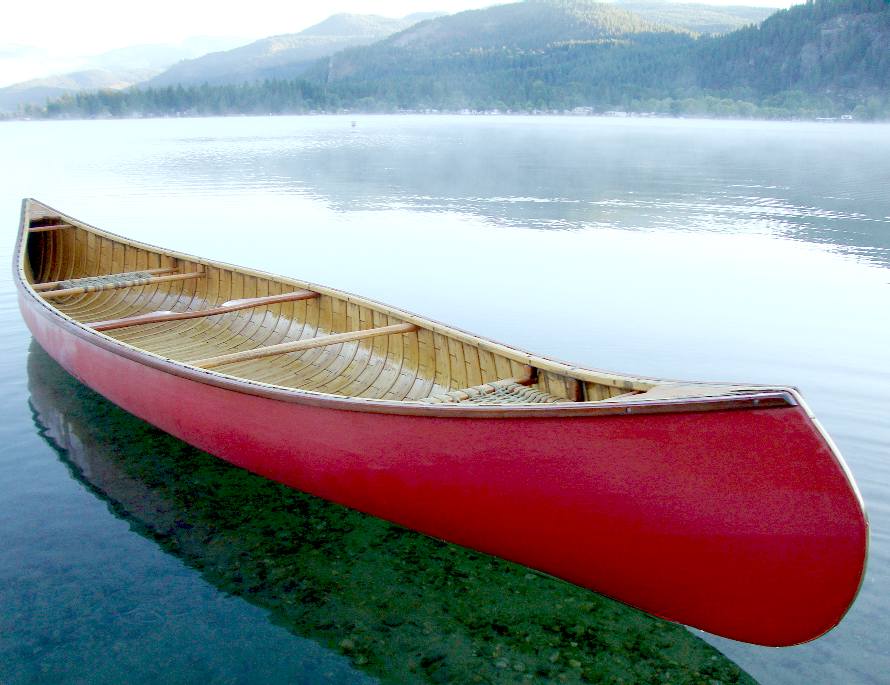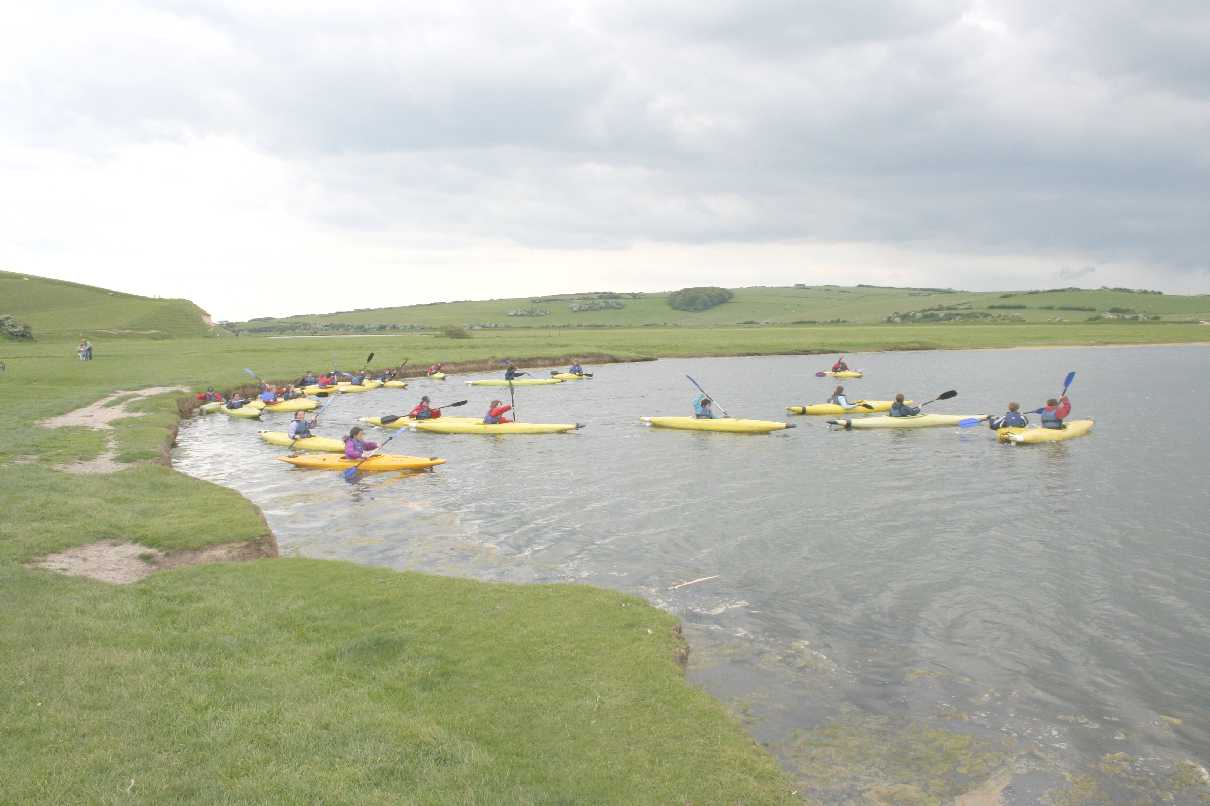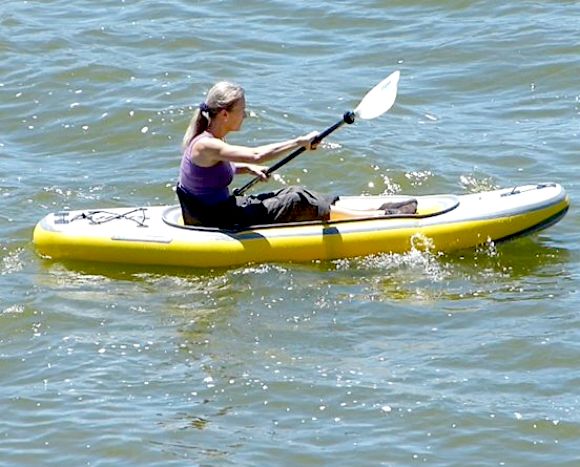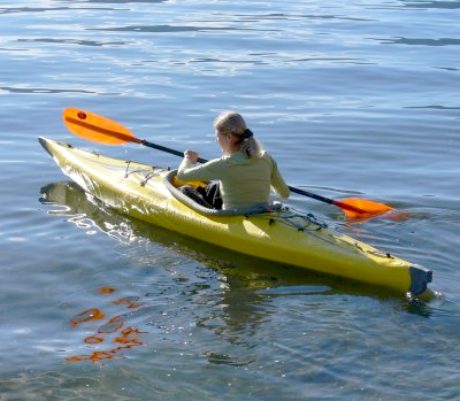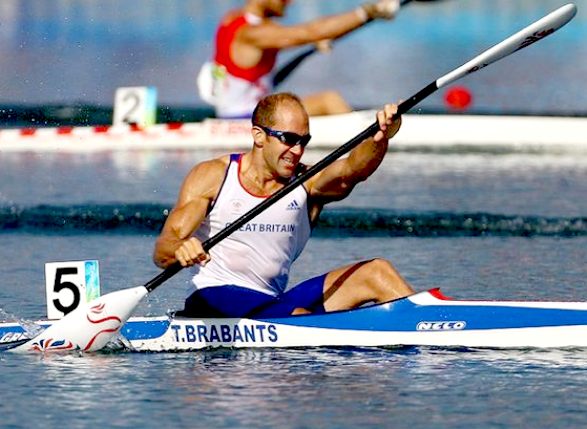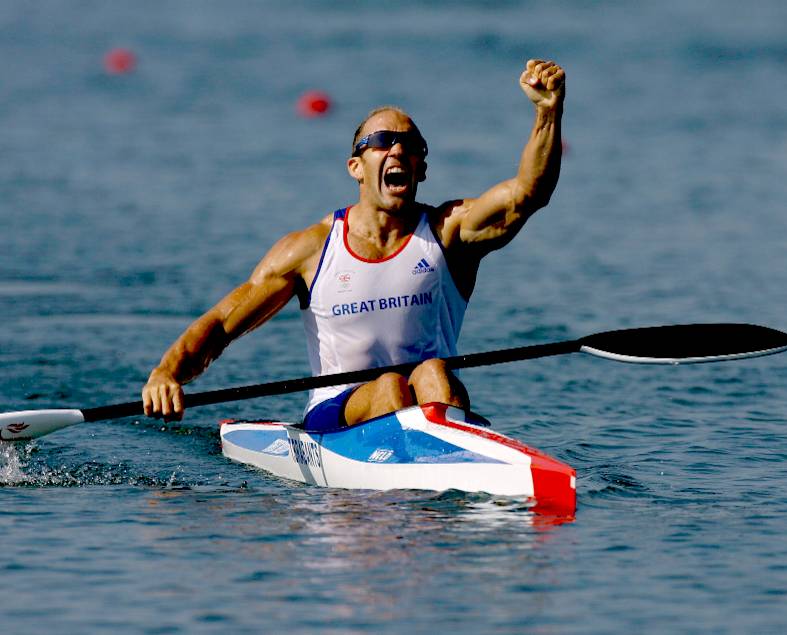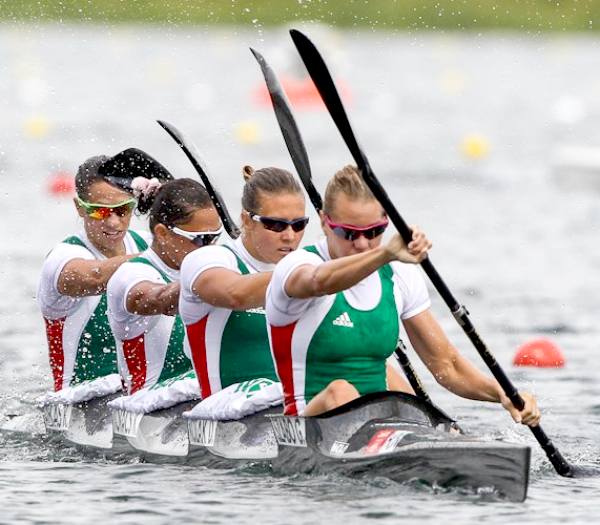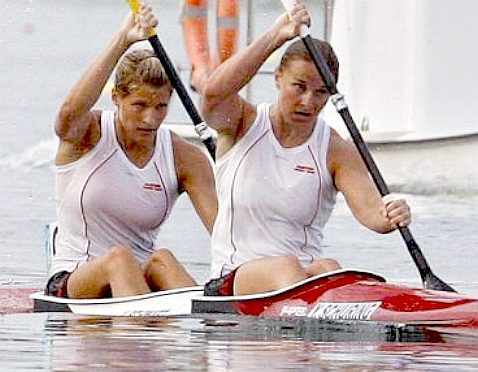|
CANOEING
|
|||
|
TRADITIONAL
- Wood and canvas canoes are a product of a by-gone era; a time before planned obsolescence,
when things were built with the long term interests of the consumer in mind. The whole idea of building a canoe with wood and canvas was to have a vessel that lives and breathes. These canoes work in the natural environment and are part of it. They are held together with tacks and screws – no glue. The wood flexes and moves with the water around it. When part of the canoe breaks or rots, it can be repaired or replaced with comparative ease because it is designed to be taken apart.
Canoeing is the activity of paddling a canoe or kayak for the purpose of recreation, sport, or transportation. It usually refers exclusively to using a paddle to propel a canoe or kayak with only human muscle power. A kayak is propelled using a paddle with two blades where the paddler sits with their legs infront of them, whereas canoes are propelled using single- or double-bladed paddles where the paddler is kneeling or sitting on a raised seat. Kayaks are usually closed-decked boats with a spraydeck, while canoes are usually open boats. There are also open kayaks and closed canoes. Although somewhat confusing, the term canoeing is generally used as a generic term for both forms, though the term "paddle sports" is also used. In the United States and Canada, however, 'canoeing' usually refers only to canoes, as opposed to both canoes and kayaks. Paddling a kayak is also referred to as kayaking.
School outing Cuckmere Haven, Sussex
Open canoes may be 'poled' (punted), sailed, 'lined and tracked' (using ropes)or even 'gunnel-bobbed'.
In modern canoe sport, both canoes and kayaks may be closed-decked. Other than by the minimum competition specifications (typically length and width (beam))and seating arrangement it is difficult to differentiate most competition canoes from the equivalent competition kayaks. The most common difference is that competition kayaks are always seated, and competition canoes are generally kneeling. Exceptions include Canoe Marathon (in both European and American competitive forms) and sprint (high kneeling position). The most traditional and early canoes did not have seats, the padlers merely kneeled on the bottom of the boat. Recreational or 'Canadian' canoes employ seats and whitewater rodeo and surf variants increasingly employ the use of 'saddles' to give greater boat control under extreme conditions.
Sport
The International Canoe Federation is the world wide canoeing organisation and creates the standard rules for the different disciplines of canoe competition. The ICF recognises several competitive and non-competitive disciplines of canoeing, of which Sprint and Slalom are the only two competing in the Olympic games. The United States Canoe Association is widely considered the American authority in sport and recreational canoeing, and recognizes many ICF classes. Other national competition rules are usually based on the rules of the ICF.
CANOE
OR KAYAK - In general, kayaks are considered to be a type of canoe. The recreational activity of “canoeing" can often refer to paddling either a canoe or a kayak. Kayak enthusiasts, though, will usually refer to paddling a kayak as “kayaking."
Unclassified Styles
EXTREME CANOES - Boat that are designed to be competitive in the Olympics are far removed from either the traditional wooden, or modern composite leisure craft. Athletes in this sport develop very strong shoulders. Any kind of sport is healthy and youngsters should be encouraged to take up such activities.
Recreational
Other recreational aspects of canoeing are not strictly defined, and distinctions are rather artificial and growing increasingly blurred as new hybrid canoes, kayaks, and similar craft boob are developed. Some of these forms may be nominally organised at national levels, but are largely individual, group, or club activities. For many groups there is no emphasis on training, the goal is simply to use boats to have fun on the water.
OLYMPICS 2016 - Adding five women's canoe events to the Olympic program will have far-reaching benefits for developing women and girls not just in the sport of Canoeing, but in all sports. And it will send a message to the world that the ICF and IOC respect the principle of the Olympic Charter and equal opportunity in sport. The added benefit: growing the canoe discipline world-wide
Other Forms
In some countries, these forms of paddling may come under the national canoeing organisations, but they are not universally accepted as canoeing, even though they involve propelling a small craft with a paddle.
HISTORY
Canoeing began to meet the simple needs of transportation across and along waterways. Canoeing was the primary mode of long-distance transportation at one time throughout much of North America, the Amazon Basin, and Polynesia, among other locations. As a method of transportation, canoes have generally been replaced by motorized boats, airplanes, railroads and roads with increasing industrialisation, although they remain popular as recreational or sporting watercraft.
LINKS:
Playak - Kayak & Canoe News Online paddling community with headlines from around the world, event calendar, photo galleries and a large directory of paddling sites known as Kayahoo. Northeast Paddler's Message Board, A site devoted to kayaking, canoeing and almost all things whitewater in the Northeastern United States. International Canoe Federation http://www.canoeicf.com The international governing body for canoe and kayak sport United States Canoe Association, Parent association for canoeing groups in the United States. Canadian Canoe Association The Canadian Canoe association British Canoe Union http://www.bcu.org.uk/ Scottish Canoe Association http://www.canoescotland.org.uk/ Texas Canoe Racing Association IrishMarathonCanoeing.com, The website for marathon canoeing in Ireland and home to message board for canoe and kayak racing in Ireland. Canoe
guybc 2015 how to remove fiberglass from awooden canoe https://canoeguybc.wordpress.com/2015/01/11/how-to-remove-fiberglass-from-a-wooden-canoe/ https://www.youtube.com/watch?v=ecStrF15o-4
A - Z SPORTS INDEX
A taste for adventure
Solar Cola - a healthier alternative
|
|||
|
This website is Copyright © 1999 & 2020 Cleaner Oceans Club Limited, an environmental educational charity working hard for world peace. The name Miss Ocean™ and SeaVax™ are trademarks. All other trademarks are hereby acknowledged.
|
